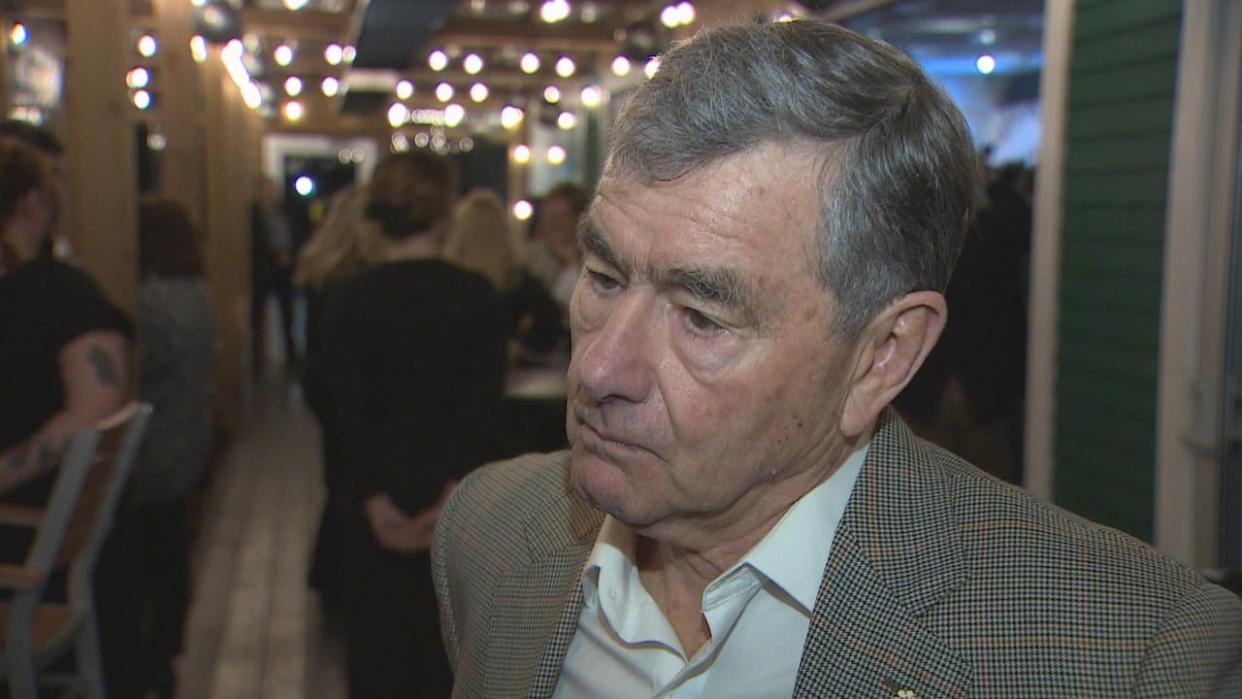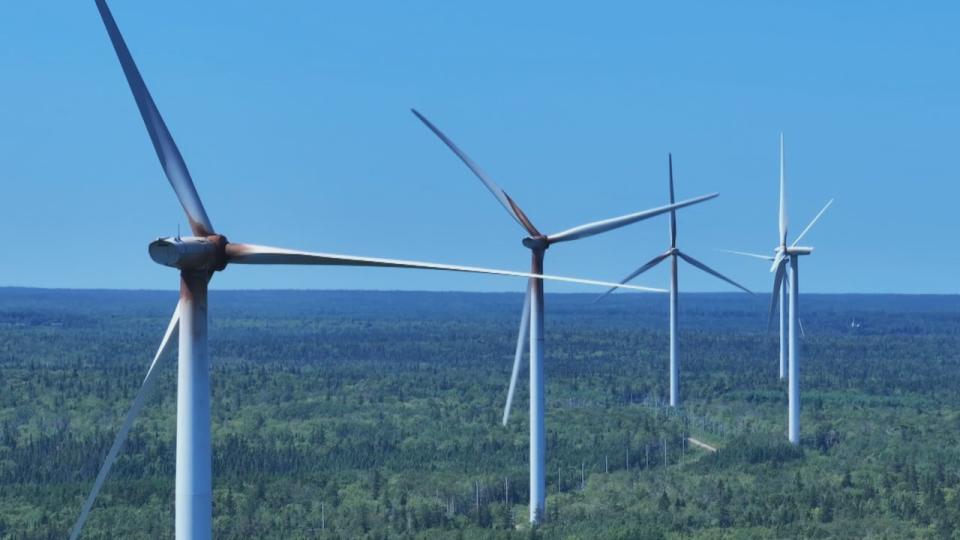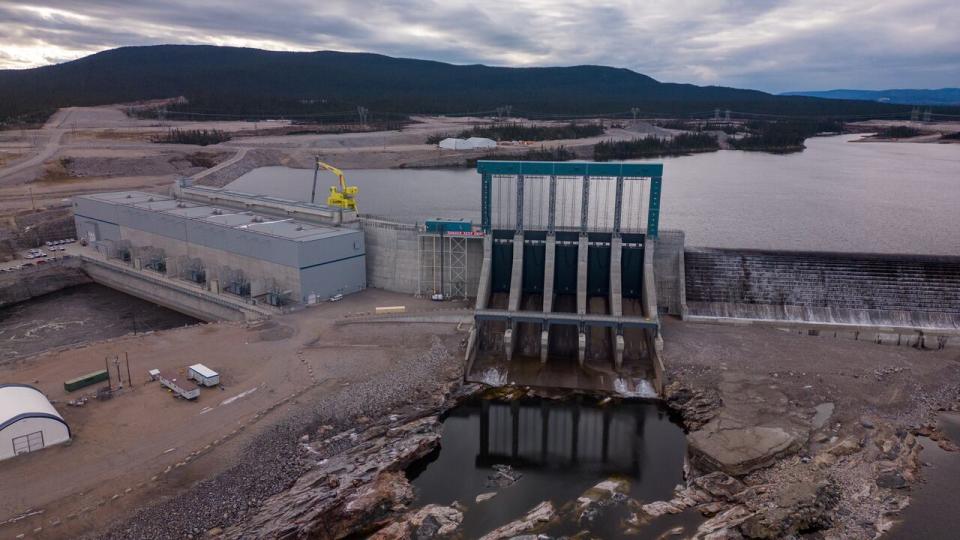World Energy GH2 wants to sell power to Hydro each winter — and claims it will have lots of it

World Energy GH2 chairman John Risley has confirmed the company is looking to sell excess electricity to Newfoundland and Labrador Hydro as part of its massive wind-to-hydrogen proposal on the island's west coast.
The prospect was mentioned briefly in the company's 4,100-page environmental impact statement, but a section related to supplying power to the grid was removed before the document was submitted.
In a recent interview with CBC News, Risley provided some clarity, saying the company is hoping for a "synergistic relationship" with electricity flowing in both directions depending on the season.
"We [can] give power to the grid in the winter time and take it in the summertime and everybody saves money and does well," Risley said last week.
"So that's something that both the engineering folks at Newfoundland Hydro and ourselves are looking at very closely."

World Energy GH2 has plans for 328 windmills in two areas on the west coast of Newfoundland. They'll be less active in the summer when the wind is less frequent, which means the project will need to draw power from the grid. (Shane Hennessey/CBC)
Hydro president Jennifer Williams has previously said the utility giant needs to double its capacity by 2050 to keep up with rising demand from factors like the growing number of electric vehicles.
The utility giant has also indefinitely delayed the closure of diesel-burning power plants in Stephenville and Holyrood, in anticipation of rising demand for electricity and reliability concerns with Muskrat Falls.
Given all of that, plus the price tag of Muskrat Falls — the province's last large expansion of the electricity system, which cost the taxpayers more than $13 billion — Risley said the prospect of buying power from wind-to-hydrogen companies should be an attractive option.
"We can provide that surplus capacity without the utility having to invest any money at all because we've got all sorts of extra power in the winter time when the wind is blowing on a fairly consistent basis and we could similarly use some power in the summertime when the wind is not as consistent," Risley said.
Risley's group plans to eventually build 328 windmills around the Port au Port Peninsula and Codroy Valley. The first phase would see one gigawatt of wind energy, with a surplus of up to 400 megawatts in the winter months, Risley said.
The second phase would see three gigawatts of wind energy, with a surplus of over one gigawatt in winter.
"You think about these numbers in the context of what it costs to build Muskrat Falls, which is 700 megawatts, then you know there's huge savings to be had here," Risley said.
"Can we figure out how to work together with Newfoundland Hydro in a way that both parties benefit?"
Talks around supply and demand ongoing
Hydro confirmed it is working with World Energy GH2 on supply and demand.
"Hydro considers all potential sources of supply to meet demand for electricity," said company spokesperson Jill Pitcher.
"Source selection is based on availability and feasibility of delivering electricity at the lowest possible cost, in an environmentally responsible manner, consistent with reliable service."
Five green hydrogen projects are believed to be submitting environmental assessments to build megaprojects in Newfoundland.
World Energy GH2 was the first to submit their documents, in which the company said it would need between 600 to 650 gigawatt-hours of power from Hydro each year.
That amounts to about 20 per cent of all electricity produced by Muskrat Falls each year.

The Muskrat Falls project on the Churchill River, in Labrador, in November 2023. (Danny Arsenault/CBC)
Hydro has previously said the company would be responsible for all costs of connecting to the grid. World Energy GH2 has requested more information so it can study the potential impacts to the existing system, according to Pitcher.
Other proposed green hydrogen projects on the Burin Peninsula and in central Newfoundland say they plan to be self-sufficient.
Everwind Fuels is hoping to generate at least two gigawatts of wind energy on the Burin. In a text message to CBC News, project leader Sam Imbeault said the company is not planning to draw power from Hydro, however they "would certainly be open to discussing offering [Hydro] our excess power, but are not in active discussions."
Download our free CBC News app to sign up for push alerts for CBC Newfoundland and Labrador. Click here to visit our landing page.


